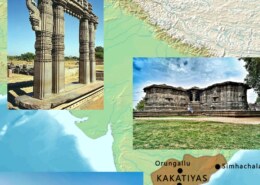Roadmap for Answer Writing Introduction Contextual Background Introduce the Indus Valley Civilization (IVC) and its timeframe (2500-1900 BCE). Highlight the significance of IVC’s urban planning and culture in shaping modern urbanization. Thesis Statement State that the urban planning principles and cultural elements of the IVC have ...
The Gupta numismatic art, renowned for its high level of craftsmanship and artistic excellence, represents a peak in Indian coinage that is not fully replicated in later periods. Gupta coins are celebrated for their intricate designs, fine detailing, and artistic quality, reflecting a sophisticatedRead more
The Gupta numismatic art, renowned for its high level of craftsmanship and artistic excellence, represents a peak in Indian coinage that is not fully replicated in later periods. Gupta coins are celebrated for their intricate designs, fine detailing, and artistic quality, reflecting a sophisticated understanding of aesthetics and metallurgy. The obverse typically features the king in a graceful pose, while the reverse showcases elaborate symbols and inscriptions.
In later times, while coinage continued to be produced, it often lacked the same level of refinement. Post-Gupta numismatic art saw a decline in artistic detail and sophistication due to various factors, including political instability, regional fragmentation, and changes in economic priorities. The decline in the central authority and standardization that characterized the Gupta period led to a less uniform and less artistically advanced numismatic tradition in subsequent eras.
See less


Model Answer Introduction The Indus Valley Civilization (IVC), which flourished around 2500-1900 BCE, is renowned for its advanced urban planning and culture. Cities like Harappa and Mohenjo-Daro exhibited remarkable organization, influencing contemporary urbanization significantly. Body Grid LayoutRead more
Model Answer
Introduction
The Indus Valley Civilization (IVC), which flourished around 2500-1900 BCE, is renowned for its advanced urban planning and culture. Cities like Harappa and Mohenjo-Daro exhibited remarkable organization, influencing contemporary urbanization significantly.
Body
Grid Layout
IVC cities, including Harappa and Mohenjo-Daro, utilized grid patterns to facilitate efficient movement and infrastructure. This systematic layout has been adopted by modern cities worldwide, such as New York City, and in India, cities like Chandigarh and Jaipur. The grid design enhances functionality and navigation, reflecting a timeless urban planning principle. Fact: Archaeological studies reveal that both Harappa and Mohenjo-Daro featured streets oriented at right angles, optimizing urban flow.
Zoning
The IVC employed distinct zones for residential, commercial, and administrative purposes, a practice that continues in contemporary urban planning. This zoning ensures efficient distribution of urban functions and maintains residential safety. Fact: Excavations have shown that IVC cities included dedicated areas for specific activities, promoting organized urban living.
Drainage and Sanitation
The IVC prioritized hygiene with sophisticated drainage systems and indoor plumbing. Modern urban centers emphasize waste management and sewer systems, reflecting the IVC’s foresight in public health. Fact: Mohenjo-Daro featured a comprehensive drainage system, with covered drains lining the streets, a revolutionary concept for its time.
Standardization
IVC city planning demonstrated a high level of standardization in construction materials and techniques. Today, urban planning relies on similar principles for efficient infrastructure development. Fact: Standardized bricks, measuring approximately 10 x 5 x 2.5 inches, were used throughout the IVC.
Public Spaces
Indus Valley cities included public spaces for communal activities, such as the Great Bath in Mohenjo-Daro. Modern urban design emphasizes public spaces, like parks and community centers, to foster social interaction. Fact: The Great Bath is believed to have served ritualistic purposes, highlighting the importance of communal spaces.
Conclusion
The urban planning and culture of the Indus Valley Civilization have profoundly influenced contemporary urban development globally and in India. The IVC’s legacy in areas such as grid layouts, zoning, sanitation, standardization, and public spaces underscores its enduring relevance in addressing modern urban challenges.
See less